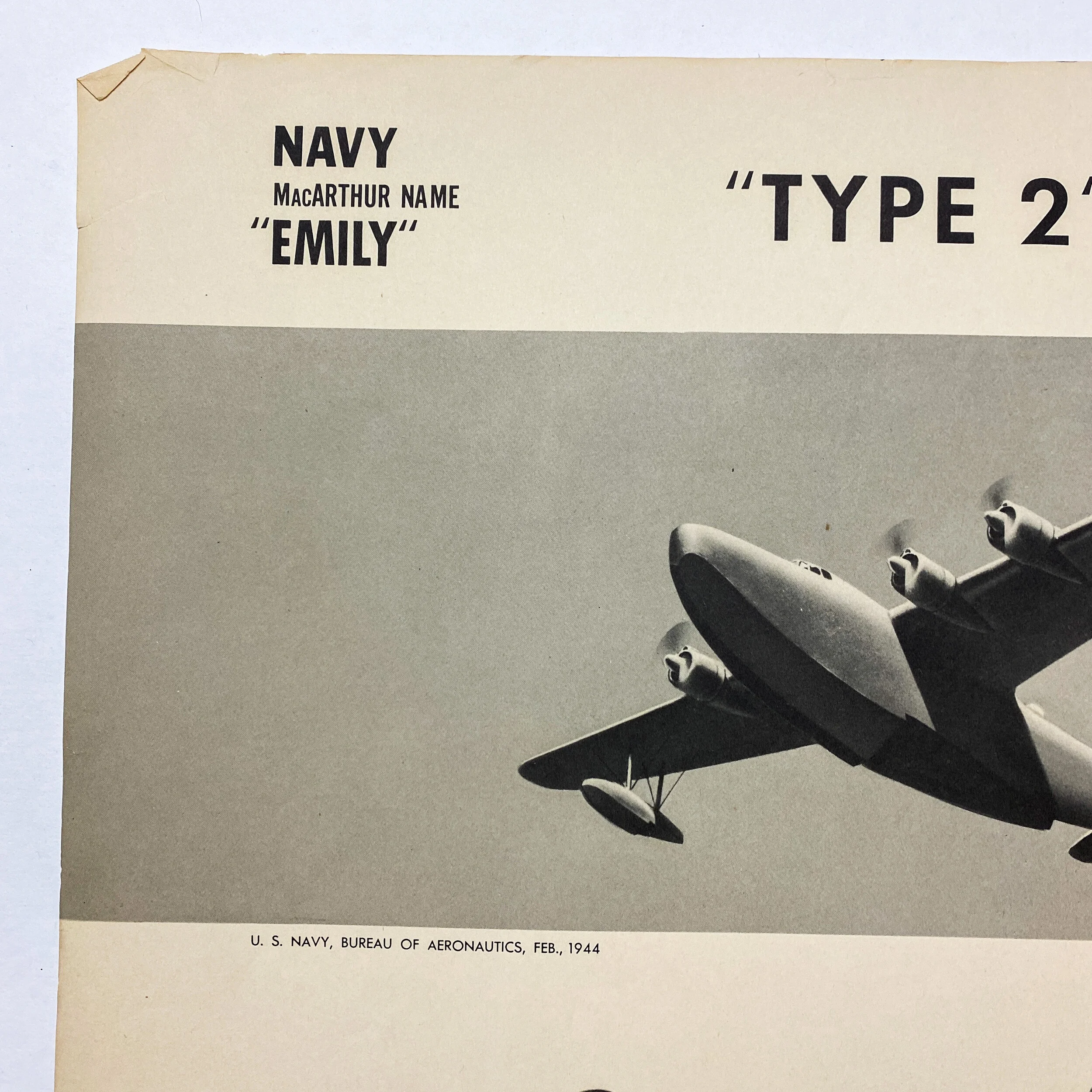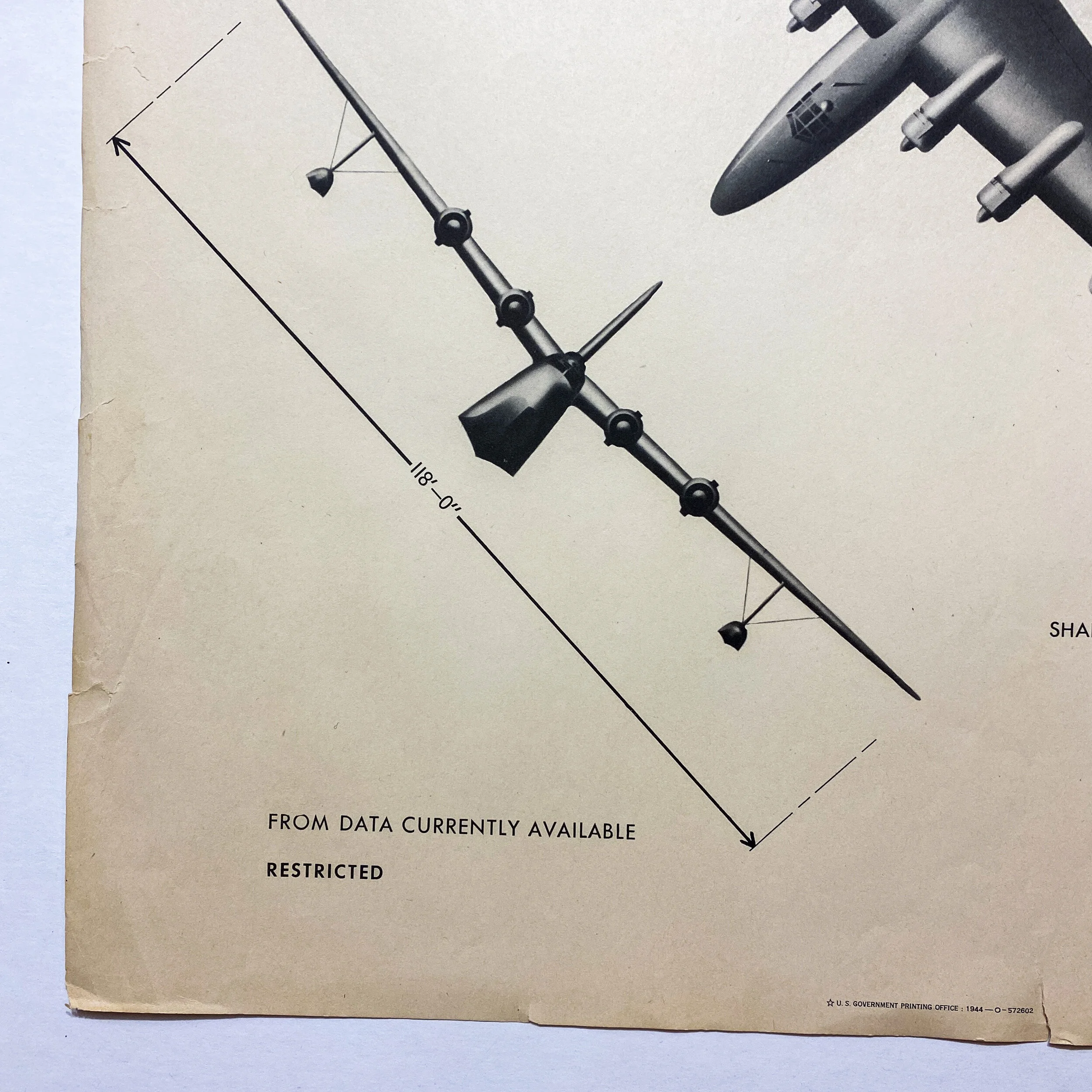Japanese Patrol Bomber Type 2 'Emily' Aviation Training W.E.F.T.U.P. ID Posters








Japanese Patrol Bomber Type 2 'Emily' Aviation Training W.E.F.T.U.P. ID Posters
Size: 19 x 25 inches
This original ‘RESTRICTED’ aircraft identification poster was published by the U.S. Naval Aviation Training Division Feb. of 1944 and was printed by the U.S. Government Printing Office 1944. This poster was posted as a training tool as well as an in theater ID poster to help U.S. and other Allied pilots, bomber crews and Naval personal to identify Allied and enemy aircraft. W.E.F.T.U.P. or Wing, Engine, Fuselage, Tail, Undercarriage, Peculiarities was a system set up for the purpose of aircraft identification and recognition.
World War II saw some of the first introduction of these aircraft ID poster to prevent friendly fire and more accurate plane recognition in combat. It was believed these posters alone could save countless lives from friendly aircraft-on-aircraft or friendly anit-aircraft fire. These posters also could cut down precious second pilots, bomber gunners, and naval gun crews would have to ID a plane flying towards them intern saving their lives by shooting first.
Each poster provides the silhouettes, dimensions, and relevant information to educate both air and ground personnel in aircraft identification. Immediate identification of aircraft, friendly or not, was essential in order for the observer (whether in the air e.g., pilot, gunner, or patrol observer, or on the ground, e.g., anti-aircraft crew) to determine his next course of action (e.g., acknowledge, attack, evade, or report). Each poster details a large clean sky and background image of the specified aircraft located as the main top imagine on the poster. It also contains important ‘peculiarities’ such as where certain gun emplacements are located, other special aircraft features, as well as wing and length measurements.
Japanese Patrol Bomber Type 2:
The Kawanishi H8K (二式飛行艇, Nishiki Hikōtei, Type 2 Flying Boat. Commonly called as 二式大型飛行艇 Nishiki Ōgata Hikōtei, 二式大艇 Nishiki Daitei or Nishiki Taitei, Type 2 Large-sized Flying Boat) is a flying boat used by the Imperial Japanese Navy Air Service during World War II for maritime patrol duties. The Allied reporting name for the type was "Emily".
The Kawanishi H8K was a large, four-engine aircraft designed for long range and extended endurance on patrols or bombing missions typically flown alone over the ocean. The prototype first flew in January 1941, and H8K1s made their first combat sortie in March 1942. The robust H8K2 "Emily" flying boat was also fitted with powerful defensive armament, which Allied pilots had substantial respect for wherever this aircraft was encountered in the Pacific theater. The H8K was called by aircraft historian René Francillon "the most outstanding water-based combat aircraft of the Second World War.
The H8K entered production in 1941 and first saw operational use on the night of 4 March 1942 in a second raid on Pearl Harbor. Since the target lay out of range for the flying boats, this audacious plan involved a refueling by submarine at French Frigate Shoals, some 900 km (560 mi) north-west of Hawaii, en route. Two planes from the Yokohama Kōkūtai (Naval Air Corps) attempted to bomb Pearl Harbor but, due to poor visibility, did not accomplish any significant damage.
Six days after the second Pearl Harbor raid, one of the Emilys was sent on a daylight photo-reconnaissance mission of Midway Atoll. It was intercepted by radar-directed Brewster F2A Buffalo fighters of Marine Fighting Squadron 221 (VMF-221) and shot down. All aboard were killed, including Lt. Hashizume Hisao, the lead pilot of the second Pearl Harbor raid.
H8K2s were used on a wide range of patrol, reconnaissance, bombing, and transport missions throughout the Pacific War. The H8K2 was given the Allied code name "Emily".